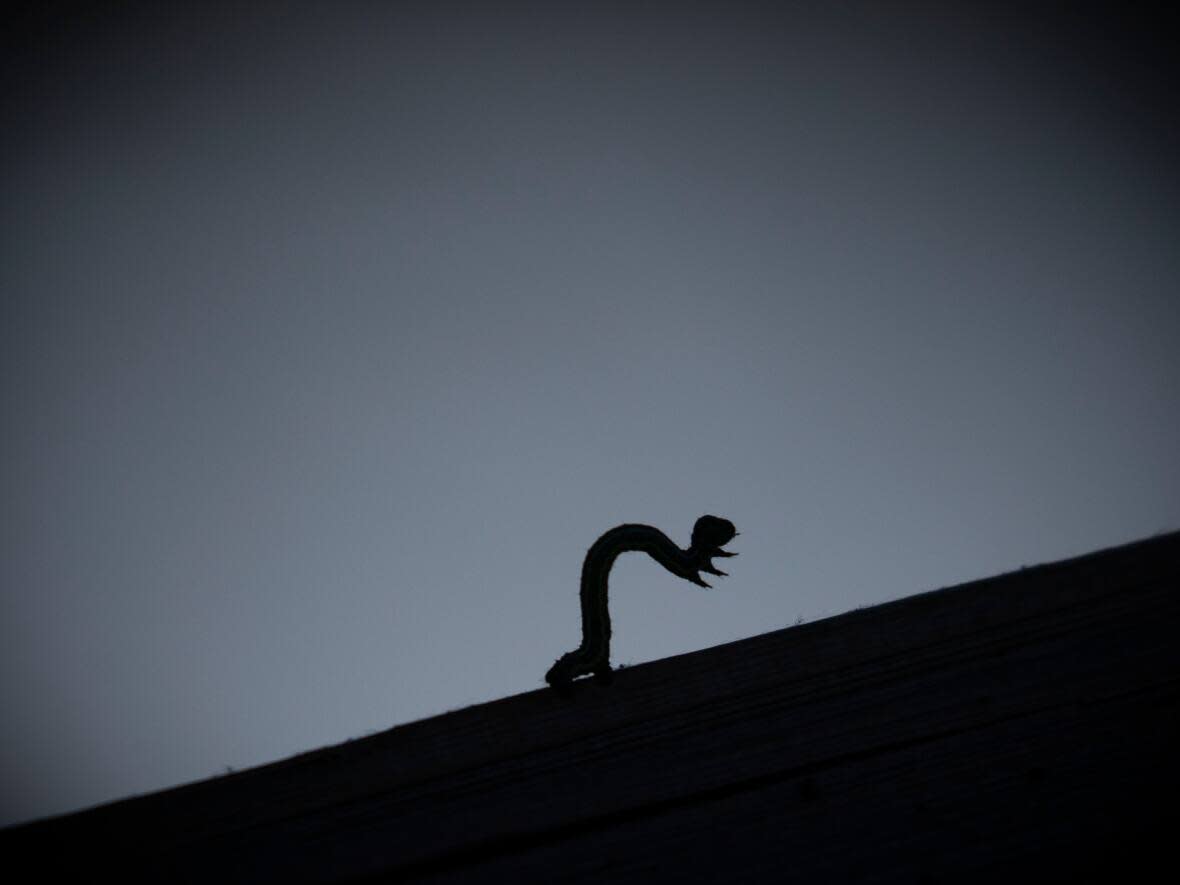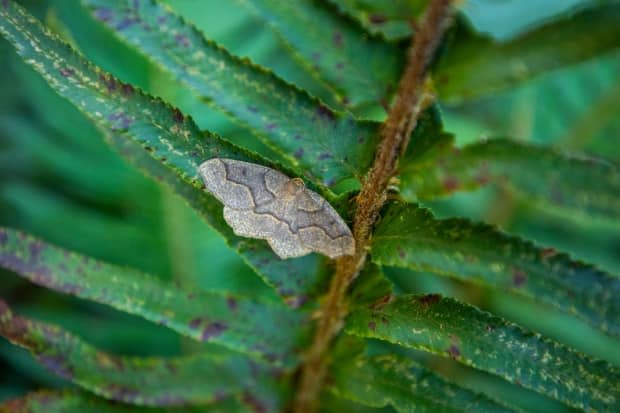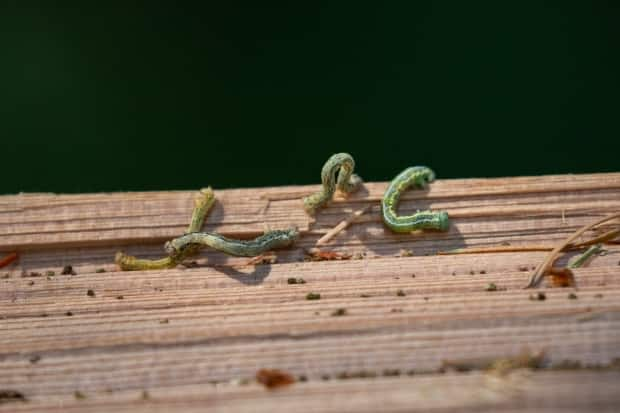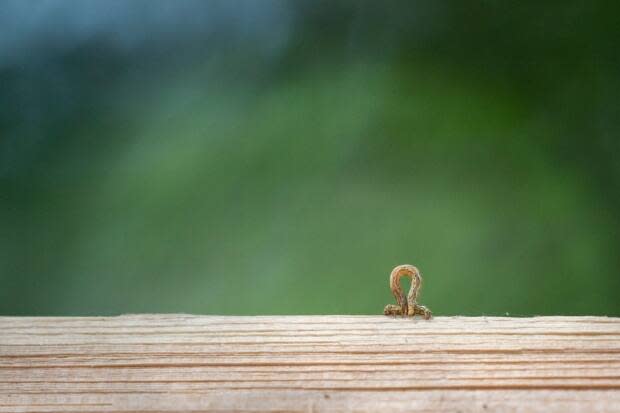Popular North Vancouver park losing trees due to looper moth infestation

Trees damaged by an infestation of hungry moths in a popular area of North Vancouver are on the chopping block.
Looper moths have been feasting on western hemlocks in Lynn Headwaters Regional Park for almost three years. As the latest infestation winds down, work to deal with the damaged trees is ramping up.
Metro Vancouver parks operations supervisor Tyler Langeloo says trees in a 3.2-hectare chunk of the park next to Lynn Valley Road will be removed because they have become a safety hazard.
Langeloo says the forested area borders trails, roadways and park infrastructure and the trees also pose a risk to power and telecommunication lines in the area.
"There's a residential community also adjacent to these trees, so it's just best for a removal from a safety perspective," said Langeloo.

One hundred trees were already removed in October. Langeloo can't say exactly how many trees will come down this time but says the landscape will certainly change. The plan is to get the job completed by March.
Metro Vancouver will also replant the area after the damaged trees are gone.
"Once the trees are removed, we will definitely come in and have a whole reforestation, replanting plan with some more natural mixed species like western red cedar and Douglas fir," said Langeloo.
The Western hemlock looper moth is native to B.C. and sees outbreaks on the South Coast lasting one to four years every 11 to 15 years due to environmental conditions.
A rash of red and brown trees, caused by the larvae feeding on needles and causing defoliation, has been observed in North Vancouver, Stanley Park, and on the Sunshine Coast.

Lori Daniels, a professor in the department of forest and conservation sciences at UBC, says when hemlock dies, the trees are quicker to collapse than cedar trees and getting them out of harm's way is the right move.
"I would hate to think of the tragedies that we would be reporting."
Daniels said what damages the trees are the worm-like larvae laid by looper moths that like to munch on newly-sprouted hemlock needles, making it hard for the hemlock to photosynthesize and rendering them unable to store carbons.
"They're basically using up all the reserves in the tree," said Daniels, adding that it can take as little as two years for back-to-back infestations to kill a hemlock.

While they are native to the region, research shows looper moth populations can explode under certain weather conditions, primarily long hot summers such as British Columbians recently experienced.
In the early 2000s, there was a significant outbreak that heavily impacted the Coquitlam River Watershed, and Daniels collaborated with then PhD student Shane McCloskey and Metro Vancouver to study weather patterns and looper moth outbreaks going back to the early 1900s.
They found that infestations worsen in the wake of a warm June, which benefits the insects because they are cold-blooded. A warm June can also signify the start of a long, hot summer which can cause drought and more stress on the trees.
Daniels said there can be public resistance to cutting trees, but it is the right move to make in the Lynn Valley area now.
"The majority of them will come down in years to a decade, which means lots and lots of very hazardous conditions for people who use those very popular trails."


